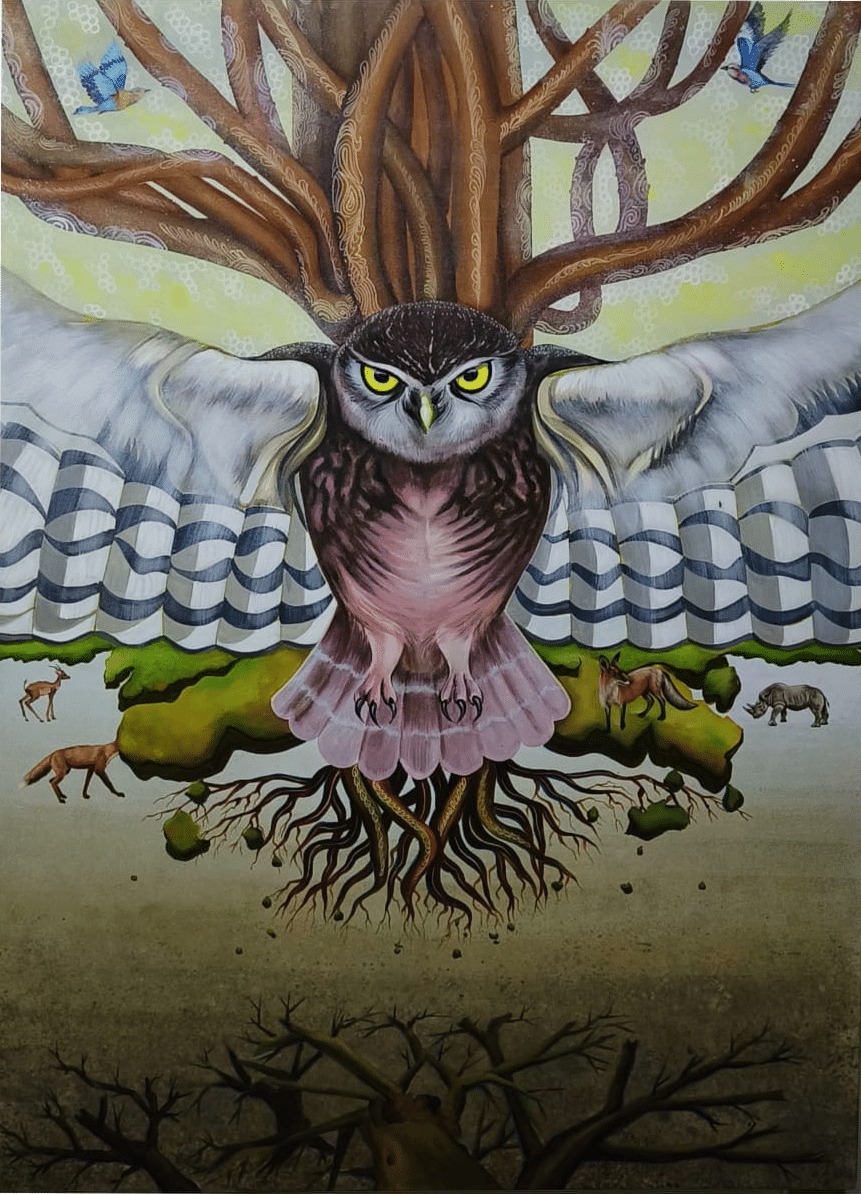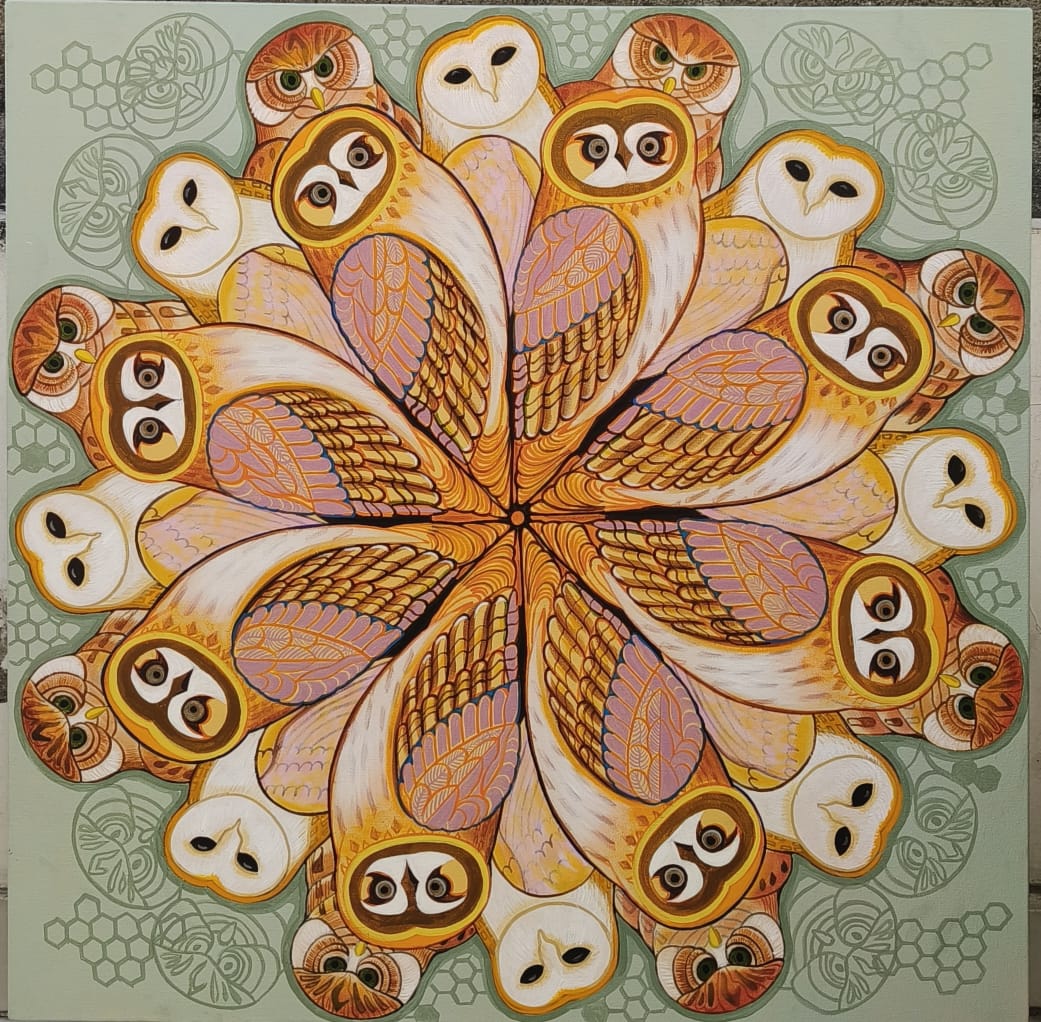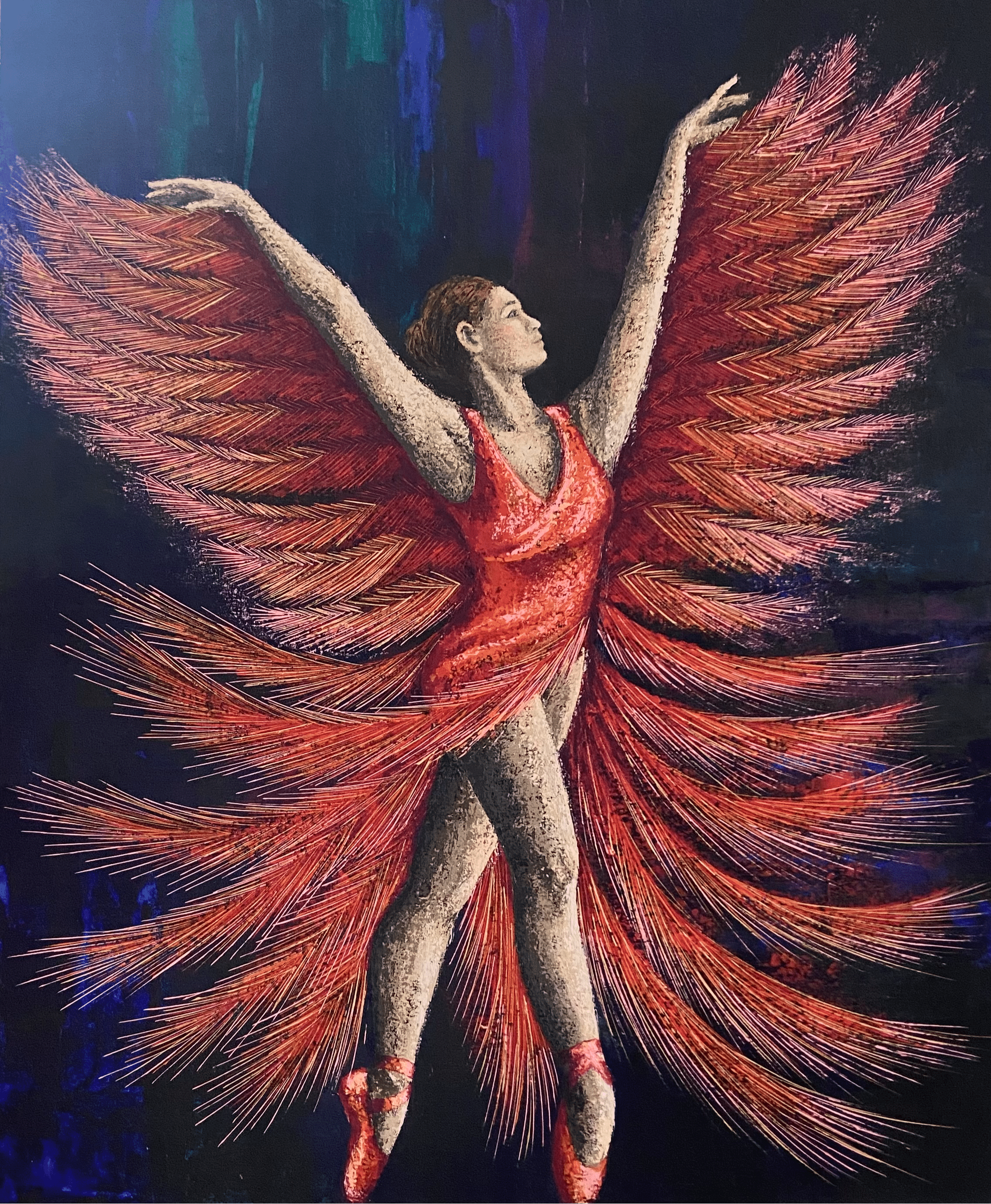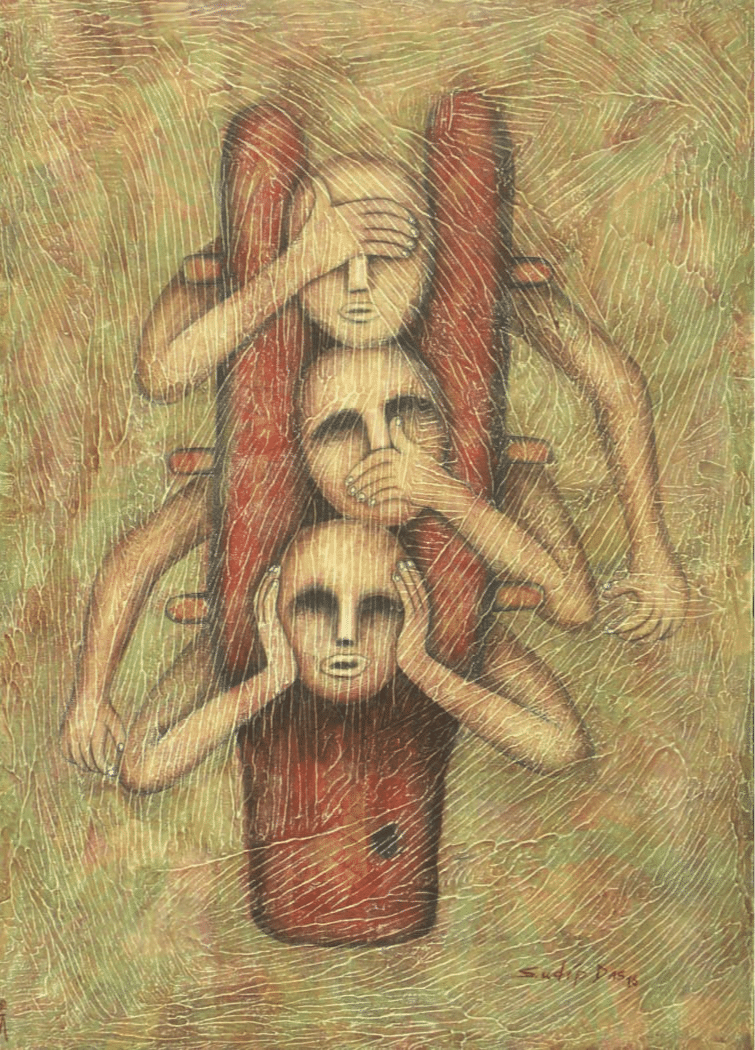
Hirst isn’t just making art — he’s asking big questions. His look says it all: What do you really see when you look at his work?
Few artists have disrupted the art world like Damien Hirst. His audacious approach to art has sparked fascination, controversy, and record-breaking sales, from showcasing a preserved shark to encrusting a human skull with diamonds. But beyond the shock factor, Hirst’s journey offers profound insights into the evolving landscape of contemporary art collecting and the very essence of what makes art valuable in the modern world.
The Making of an Art Maverick
Born in 1965 in Bristol, Damien Hirst rose to prominence in the late 1980s as part of the Young British Artists (YBAs). His ability to merge art with business acumen quickly set him apart. Hirst understood that art was not just about aesthetics—it was about storytelling, provocation, and, most importantly, value creation. His works transcend traditional artistic boundaries, forcing viewers to question their perceptions of beauty, mortality, and materialism.
His breakthrough came with Damien Hirst’s Shark, formally titled The Physical Impossibility of Death in the Mind of Someone Living (1991). This work—a 14-foot tiger shark suspended in formaldehyde—challenged conventional notions of sculpture and became an icon of conceptual art. More than just an artwork, it was a statement on mortality and preservation, recurring themes throughout Hirst’s oeuvre. This piece also set the stage for a new era where contemporary art became both a spectacle and a commodity, solidifying Hirst as an artist who understood the mechanics of the art market better than most.
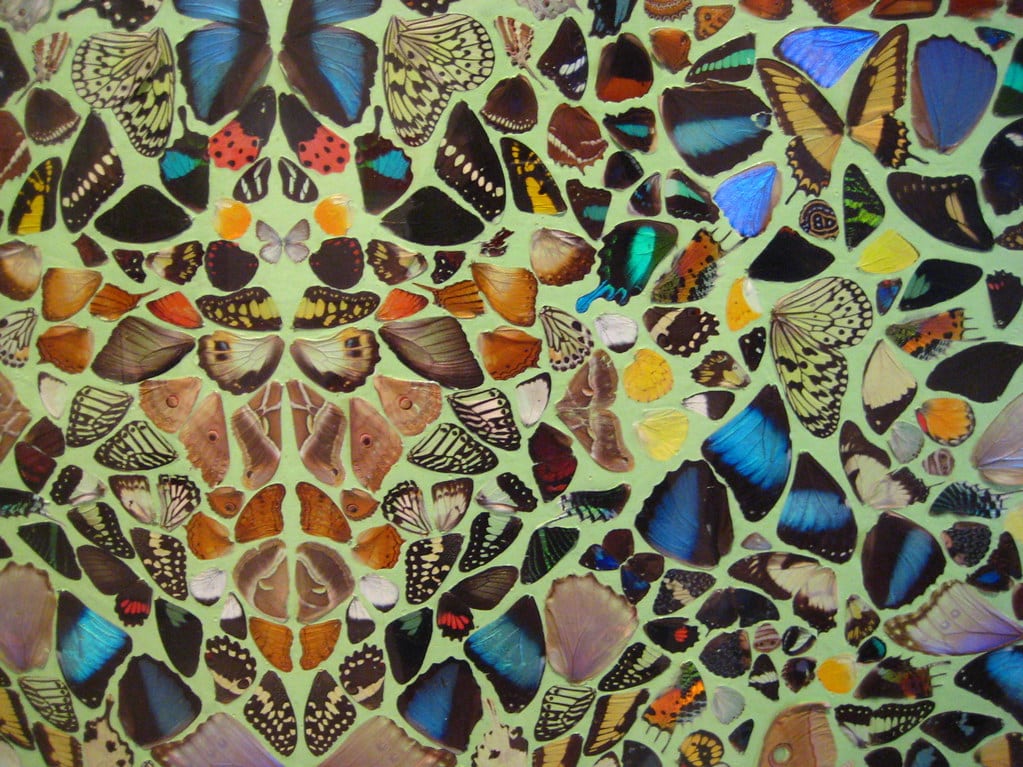
It looks like a church window, but it’s made of wings. Hirst mixes beauty and loss, asking us to see something peaceful in something delicate.
Collecting Hirst: The Intersection of Art and Investment
Hirst is not just an artist; he is a brand. His ability to commercialize his work without diluting its artistic integrity makes him a fascinating case study for collectors. One of his most recognizable series, Damien Hirst dots, exemplifies this blend of repetition and marketability. With hundreds of variations, the dot paintings are visually striking and highly collectible. Their uniformity and infinite possibilities make them appealing to traditional and modern art collections.
Then comes Damien Hirst’s butterfly series—ethereal compositions made from real butterfly wings. These pieces evoke life, death, and transformation themes, appealing to both philosophical collectors and investors seeking high-value works. Using real butterflies, Hirst taps into the fleeting nature of beauty and existence, a theme that resonates deeply with collectors who view art as a reflection of the human experience.
Damien Hirst’s butterfly series, Closeup
One of the most jaw-dropping moments in contemporary art history was the sale of Damien Hirst’s diamond skull, titled For the Love of God (2007). This platinum skull, encrusted with 8,601 flawless diamonds, was rumored to have sold for £50 million. The piece was a statement on wealth, mortality, and the eternal nature of art, reinforcing Hirst’s ability to merge luxury with conceptual depth. This bold work solidified that contemporary art is as much about perception and narrative as it is about the materials used.
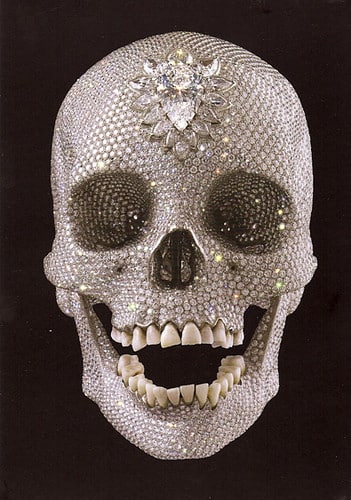
A skull, covered in sparkle. Hirst puts death on display and asks: if we dress it up, does it still scare us?
The Collector’s Perspective: Why Hirst’s Art Matters
Hirst once stated, “Art goes on in your head… If you said something interesting, that might be a title for a work of art and I’d write it down. Art comes from everywhere. It’s your response to your surroundings.” This philosophy is evident in his work and contributes to his lasting appeal among collectors. His ability to take mundane or shocking objects and elevate them to high art status is part of his genius.
A fascinating aspect of collecting Damien Hirst artwork is the diversity of mediums he explores. From painting to sculpture to mixed media, his versatility allows collectors to acquire pieces that fit different aesthetic preferences and investment strategies. His experimentation even extends to everyday objects, such as the notorious Damien Hirst Coke can, a statement on consumerism and branding. By turning an ordinary item into a collectible art piece, Hirst challenges the very nature of value in art.
Hirst’s impact extends beyond galleries—his works are among the most expensive contemporary pieces ever sold. Collectors worldwide recognize that his pieces are more than just visual spectacles—they are cultural touchstones. Museums, billionaire collectors and investors alike acknowledge that owning a Hirst is not just about aesthetics; it’s about owning a piece of modern art history.
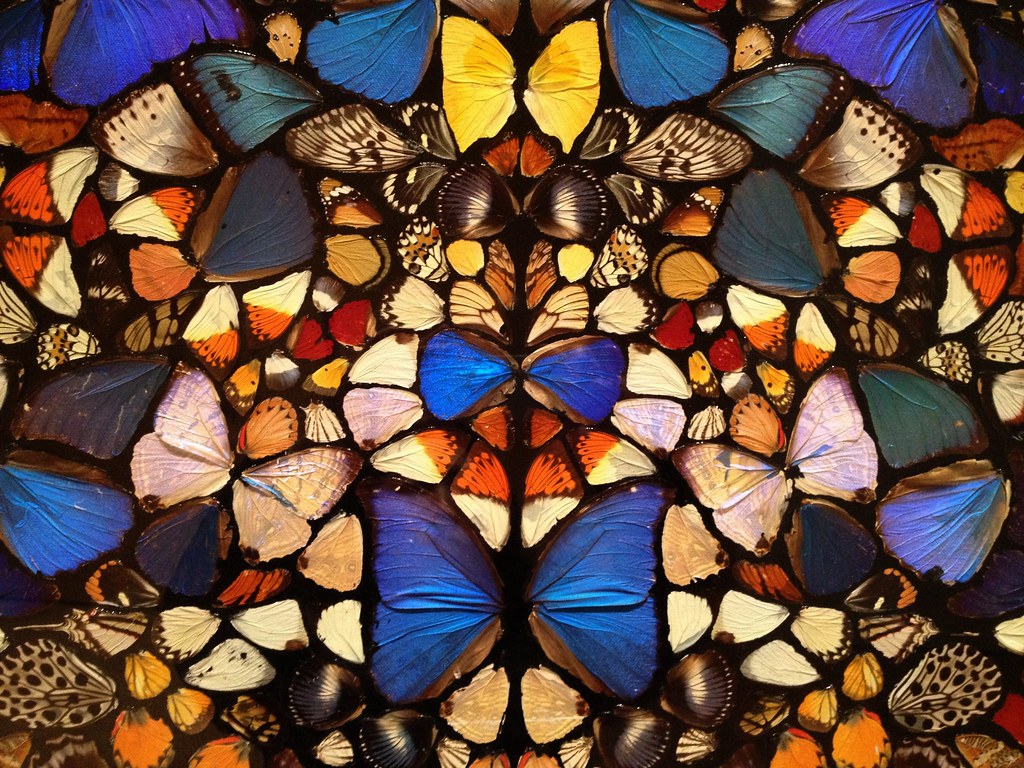
It looks like a church window, but it’s made of wings. Hirst mixes beauty and loss, asking us to see something peaceful in something delicate.
Lessons for Collectors: What We Can Learn from Hirst’s Market Strategy
For collectors looking to navigate the contemporary art market, Hirst provides key takeaways:
- Art as an Asset – Hirst has demonstrated that art can be both an aesthetic and financial investment. Understanding market trends and artist branding can elevate a collection’s value.
- Concept Over Medium – The success of Hirst’s works lies in their powerful concepts rather than traditional technical execution. Collectors should seek art that tells compelling stories.
- Diversification Matters – Hirst’s extensive range, from Damien Hirst dots to his elaborate sculptures, showcases the importance of collecting across different styles and materials.
- Provocation Sells – Art that challenges norms often garners attention and long-term value. Collectors should not shy away from bold, conversation-starting pieces.
- Brand Power in Art – Hirst’s career highlights the impact of personal branding in art. A well-marketed artist can dramatically influence the desirability and pricing of their work.
- Understand the Narrative – Every Hirst piece tells a story. Collectors who appreciate and communicate an artwork’s narrative can enhance its value within the market.
- Keep an Eye on the Future – Hirst’s work continues to evolve. Smart collectors track his latest projects, as early investments in new series often yield significant returns.
Discover the Next Damien Hirst with Elisium Art
At Elisium Art, we celebrate artists who, like Damien Hirst, redefine contemporary art. If you are looking to expand your collection with thought-provoking and investment-worthy pieces, we curate works that capture bold artistic visions and push the boundaries of creativity.
His art is a wormhole—into life, death and the nature of existence. Whether it’s the shock of a preserved shark, the delicate beauty of butterfly wings, or the glittering excess of diamonds, Damien Hirst artist has created a legacy that will remain invaluable to collectors for generations.
If his work inspires you, imagine what other groundbreaking artists might be waiting for your collection. Explore the world of fine art with Elisium Art—where innovation meets timeless value.

Written by
Sanjana Dhar
Sanjana Dhar is a passionate storyteller and art enthusiast who brings a unique blend of creativity and marketing expertise to the Elisium Art team. Hailing from Kolkata, a city steeped in artistic heritage, she developed a deep appreciation for contemporary art and its ability to transcend cultural boundaries. With a background in media studies and a passion for exploring the vibrant world of Indian and international art, she crafts compelling narratives that connect audiences with the transformative power of art. Her experience in branding, social media, and content strategy allows her to effectively communicate the essence of artistic expression, unraveling the stories behind each masterpiece and spotlighting the diverse voices shaping the contemporary art world.






